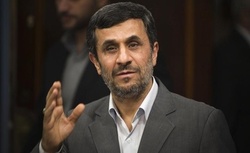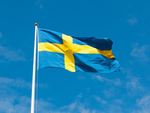01/15/2012
Iran - Wind power technology being pushed in the midst of nuclear controversy
Iran is planning a series of new wind farm plants with a total production capacity of 20 megawatts. The Renewable Energy Organisation of Iran (SUNA) put the production capacity of the country’s wind energy at 100 megawatts, and in a report by the IRNA, Iraj Harsini, a representative from SUNA, said that recognising windy places and attracting investors are the most important plans drawn up by the organisation, adding that the development of alternative energies can help Iran reduce greenhouse gas emissions and become more sustainable.
New wind turbiness are already under construction in Isfahan and Sarein, and 100 bn riyals has been made available by the government for the development of further wind farm facilities.
General Overview of Wind Energy in Iran:
Wind power in Iran has been experiencing a growth in wind generation in recent years, and has a plan to substantially increase wind generation each year. Iran is the sole center producing wind turbines in the Middle East.
In 2006, Iran generated 45 megawatts of electricity from wind power (ranked 30th in the world). This was a 40% increase over 32 megawatts in 2005. Total wind generation in 2004 was 25 megawatts out of 33,000 megawatts total electrical generation capacity for the country. In 2008, Iran's wind power plants in Manjil (in Gilan province) and Binaloud (in Razavi Khorasan province) produce 128 megawatts of electricity. By 2009, Iran had wind power capacity of 130 MW.
Wind Farms in Iran:
- Manjil and Rudbar Wind Farm: The Manjil and Rudbar Wind Farm is a wind farm located in Gilan, Iran. This wind farm by 2009 used 171 NEG Micon and Vestas turbines with capacities ranging form 300 to 660 KW. Initially in 2007, twenty one turbines were installed in the city of Manjil while four were operational in the neighboring city of Rudbar. By 2009 its installed electricity generation capacity had been expanded to the total of 100.8 MW.
- Binalood wind farm: The Binalood wind farm is a wind farm situated in Razavi Khorasan Province of Iran near the city of Nishapur. It currently uses 43 turbines with generating capacity of 660 KW to produce 28.2 MW of electricity using wind power. The area of the farm is over 700 hectares. The project was initiated in 2002 and the farm came online in 2008. The plant was built by Renewable energy organization of Iran. The plant is currently being expanded by adding 50 more turbines, each with a capacity of 660 KW, increasing its total capacity to 61.2 MW.
- Iran–Armenia Wind Farm: The Armenian and Iranian energy sectors are currently jointly constructing the Iran-Armenia Wind Farm which is set to become the country's largest wind farm, having an installed electric capacity of 90 MW. As of 2008, the Lori 1 Wind power plant is Armenia's only wind power plant. Completed in December 2005 by the Iranian company "Sunir" with funding from Iran, it consists of 4 wind turbines and has a capacity of 2.64 MWe. It is located along the Bazum Mountains at Pushkin Pass (40°54′41.36″N 44°25′52.86″E) in Armenia's northern region of Lori. In 2006, the Lori 1 WPP generated only 2.6 GWh of electricity (a yearly average of 296.8 KWe—about 11% of installed capacity).
Overview of Energy Generation in the Iran:
Energy resources in Iran consist of the third largest oil reserves and the second largest natural gas reserves in the world. Iran is in a constant battle to use its energy resources more effectively in the face of subsidization and the need for technological advances in energy exploration and production. Energy wastage in Iran amounts to six or seven billion dollars (2008).
The energy consumption in the country is extraordinarily higher than international standards. Iran recycles 28 percent of its used oil and gas whereas the figure for certain countries stands at 60 percent. Iran paid $84 billion in subsidies for oil, gas and electricity in 2008. Iran is one of the most energy intensive countries of the world with per capita energy consumption 15 times that of Japan and 10 times that of European Union. Also due to huge energy subsidies, Iran is one of the most energy inefficient countries of the world, with the energy intensity three times higher than global average and 2.5 times the middle eastern average.
Iran is one of the leading members of OPEC (Organization of Petroleum Exporting Countries) and the Organization of Gas Exporting Countries (GECF). Iran received $47 billion dollars in oil export revenues, which accounts for about 50% of state revenues.[5] Natural gas and oil consumption both account for about half of Iran’s domestic energy consumption. With its heavy dependence on oil and gas revenues Iran continues to explore for new sources of natural gas and oil. Recently Iran has focused its energy sector on the exploration of the South Pars offshore natural gas fields in the Persian Gulf.
Iran has become self-sufficient in designing, building and operating dams and power plants and it has won a good number of international bids in competition with foreign firms.
Power generation capacity of Iranian thermal power plants reached 173 terawatt hours in 2007. Accounting for 17.9 percent of power production in the Middle East and African region. Natural gas has been the main energy in Iran in 2007, comprising over 55 percent of energy needs, while oil and hydroelectricity accounted for 42 and 2 percent respectively. The region’s energy need will increase by 26.8 percent until 2012.
Energy plays an important role in Iranian politics. Robert Baer in his book "The Devil We Know: Dealing with the New Iranian Superpower" argues that Iran has attained the status of an Energy superpower and is on its way to become a military-political superpower.
For more information on this article or if you would like to know more about what www.windfair.net can offer, please do not hesitate to contact Trevor Sievert at ts@windfair.net
www.windfair.net is the largest international B2B Internet platform – ultimately designed for connecting wind energy enthusiasts and companies across the globe!
Iran is a member of the Global Wind Energy Council.[4]
New wind turbiness are already under construction in Isfahan and Sarein, and 100 bn riyals has been made available by the government for the development of further wind farm facilities.
General Overview of Wind Energy in Iran:
Wind power in Iran has been experiencing a growth in wind generation in recent years, and has a plan to substantially increase wind generation each year. Iran is the sole center producing wind turbines in the Middle East.
In 2006, Iran generated 45 megawatts of electricity from wind power (ranked 30th in the world). This was a 40% increase over 32 megawatts in 2005. Total wind generation in 2004 was 25 megawatts out of 33,000 megawatts total electrical generation capacity for the country. In 2008, Iran's wind power plants in Manjil (in Gilan province) and Binaloud (in Razavi Khorasan province) produce 128 megawatts of electricity. By 2009, Iran had wind power capacity of 130 MW.
Wind Farms in Iran:
- Manjil and Rudbar Wind Farm: The Manjil and Rudbar Wind Farm is a wind farm located in Gilan, Iran. This wind farm by 2009 used 171 NEG Micon and Vestas turbines with capacities ranging form 300 to 660 KW. Initially in 2007, twenty one turbines were installed in the city of Manjil while four were operational in the neighboring city of Rudbar. By 2009 its installed electricity generation capacity had been expanded to the total of 100.8 MW.
- Binalood wind farm: The Binalood wind farm is a wind farm situated in Razavi Khorasan Province of Iran near the city of Nishapur. It currently uses 43 turbines with generating capacity of 660 KW to produce 28.2 MW of electricity using wind power. The area of the farm is over 700 hectares. The project was initiated in 2002 and the farm came online in 2008. The plant was built by Renewable energy organization of Iran. The plant is currently being expanded by adding 50 more turbines, each with a capacity of 660 KW, increasing its total capacity to 61.2 MW.
- Iran–Armenia Wind Farm: The Armenian and Iranian energy sectors are currently jointly constructing the Iran-Armenia Wind Farm which is set to become the country's largest wind farm, having an installed electric capacity of 90 MW. As of 2008, the Lori 1 Wind power plant is Armenia's only wind power plant. Completed in December 2005 by the Iranian company "Sunir" with funding from Iran, it consists of 4 wind turbines and has a capacity of 2.64 MWe. It is located along the Bazum Mountains at Pushkin Pass (40°54′41.36″N 44°25′52.86″E) in Armenia's northern region of Lori. In 2006, the Lori 1 WPP generated only 2.6 GWh of electricity (a yearly average of 296.8 KWe—about 11% of installed capacity).
Overview of Energy Generation in the Iran:
Energy resources in Iran consist of the third largest oil reserves and the second largest natural gas reserves in the world. Iran is in a constant battle to use its energy resources more effectively in the face of subsidization and the need for technological advances in energy exploration and production. Energy wastage in Iran amounts to six or seven billion dollars (2008).
The energy consumption in the country is extraordinarily higher than international standards. Iran recycles 28 percent of its used oil and gas whereas the figure for certain countries stands at 60 percent. Iran paid $84 billion in subsidies for oil, gas and electricity in 2008. Iran is one of the most energy intensive countries of the world with per capita energy consumption 15 times that of Japan and 10 times that of European Union. Also due to huge energy subsidies, Iran is one of the most energy inefficient countries of the world, with the energy intensity three times higher than global average and 2.5 times the middle eastern average.
Iran is one of the leading members of OPEC (Organization of Petroleum Exporting Countries) and the Organization of Gas Exporting Countries (GECF). Iran received $47 billion dollars in oil export revenues, which accounts for about 50% of state revenues.[5] Natural gas and oil consumption both account for about half of Iran’s domestic energy consumption. With its heavy dependence on oil and gas revenues Iran continues to explore for new sources of natural gas and oil. Recently Iran has focused its energy sector on the exploration of the South Pars offshore natural gas fields in the Persian Gulf.
Iran has become self-sufficient in designing, building and operating dams and power plants and it has won a good number of international bids in competition with foreign firms.
Power generation capacity of Iranian thermal power plants reached 173 terawatt hours in 2007. Accounting for 17.9 percent of power production in the Middle East and African region. Natural gas has been the main energy in Iran in 2007, comprising over 55 percent of energy needs, while oil and hydroelectricity accounted for 42 and 2 percent respectively. The region’s energy need will increase by 26.8 percent until 2012.
Energy plays an important role in Iranian politics. Robert Baer in his book "The Devil We Know: Dealing with the New Iranian Superpower" argues that Iran has attained the status of an Energy superpower and is on its way to become a military-political superpower.
For more information on this article or if you would like to know more about what www.windfair.net can offer, please do not hesitate to contact Trevor Sievert at ts@windfair.net
www.windfair.net is the largest international B2B Internet platform – ultimately designed for connecting wind energy enthusiasts and companies across the globe!
Iran is a member of the Global Wind Energy Council.[4]
- Source:
- Online Editorial www.windfair.net
- Author:
- Posted by Trevor Sievert, Online Editorial Journalist
- Email:
- ts@windfair.net
- Link:
- www.windfair.net/...
- Keywords:
- wind, wind energy, wind turbine, rotorblade, awea, ewea, wind power, suppliers, manufacturerstrevor sievert





























